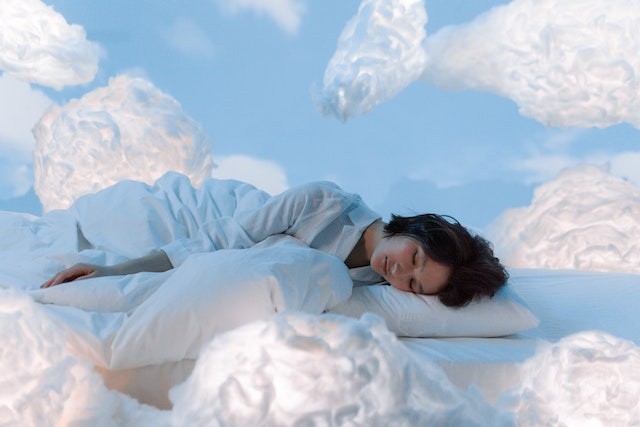
A new device was developed to help us explore the link between our dreams and creativity. Reports have associated dreaming with enhanced creativity, and the device may finally pave the way for us to find the answer.
Glovelike Device For Studying Dream and Creativity
Dormio is a glovelike device with sensors to measure heart rate and muscle tone changes as it tracks the sleep stages. According to a presentation at ACM SIGCHI, Dormio is "an interface to your semi-conscious dreams."
According to research co-author Robert Stickgold, a neurologist at Harvard University who has been studying dreams for four decades (and uses this method in his personal life), the Dormio gadget gives users unprecedented control over this process. He added that the glove will enable researchers to study "consciousness and dreams in a way that has never been possible before."
Additionally, the uses can go far beyond encouraging innovation. Experts are currently working with patients to determine whether the glove can aid those with post-traumatic stress disorder in better recovering from trauma and gaining control over their dreams.
The study's findings are encouraging, but Ken Paller, a neurologist at Northwestern University who also studies dreams, thinks further research is needed to determine the relationship between dreams and creativity. For starters, Paller points out that it's still not obvious whether the experiment's findings about an increase in creativity also apply to completely unguided and typical dreams. He adds that more studies are needed to clarify the connection between creativity and regular dreaming as many unanswered questions regarding dreams exist, Science.org reported.
What Did Happen to The Study Using Dormio
Fifty volunteers-mostly students and professors-were invited to a laboratory at the Massachusetts Institute of Technology (MIT). They were allowed to stay awake or doze off in a lab setting.
Those taking naps curled up on the couch wearing a Dormio and an eye mask. The device was connected to a computer that transmitted audio signals to encourage users to dream about a particular topics-a process known as "targeted dream incubation."
A computer prompt told the volunteers in the first series of tests to relax and close their eyes. The team then waited for the glove to identify that participants had entered the first stage of sleep, or "N1," a semilucid state thought to be a creativity sweet spot. When they began to nod off, a recording instructed them to "think about trees."
The participants can still receive information from the outside world at this point, but their mental faculties are less restrained than they are while we are awake, and our ideas are free to run wild. People with N1 have brief, intense dreams that, until disturbed by awakening, typically pass them by undetected.
A second audio cue woke the volunteers up from their nap after being in N1 for around 5 minutes by instructing them to speak out about what was on their minds. They were then required to resume sleeping by the recording.
The participants were woken up to describe their nightmares and then put back to sleep numerous times over 45 minutes. All of the Dormio-user volunteers reported experiencing dreams about trees.
One remembered having ancient wood for arms, and another remembered being so large that he could "eat trees like finger food."
According to Adam Haar, a cognitive scientist at MIT and co-author of the study, many individuals who thought themselves "stuck and uncreative" were shocked at how creative they could be in their dreams. Most people forget that part of themselves that is physiologically built to be wholly unstuck every night.
Not everyone was instructed to have tree-related dreams. People in one control group fell asleep of their own will. Two more control groups had participants staying awake, contemplating trees, or simply focusing on their general thoughts.
Volunteers who dreamed about trees scored 78% more in creativity metrics than those who stayed awake and only observed their thoughts and 63% more creatively than those who stayed awake and only thought about trees. Individuals who dreamed about trees outperformed those who didn't hear the prompt by 48%.
The study was published in Scientific Reports.
RELATED ARTICLE : How Do 7 to 9 Hours of Sleep Help Improve Mental Health
Check out more news and information on Sleep in Science Times.












